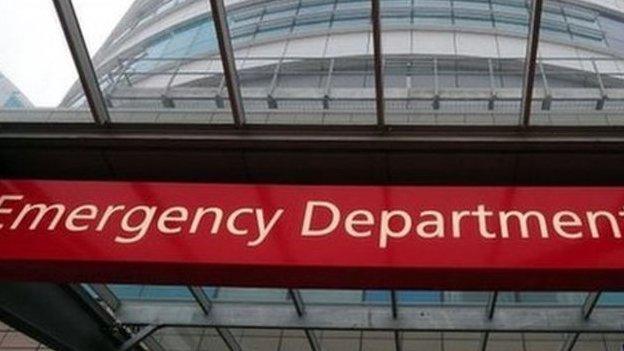Hospital 'long-waiters' show sharp rise
- Published
- comments
Saffron Cordery of NHS Providers tells Radio 4's World at One "£4-5bn" is needed to keep the NHS going
Hospitals waiting times in England have deteriorated markedly in the past five years, an analysis shows.
The Health Foundation review of official NHS data between 2011-12 and 2016-17 found longer waits for cancer, A&E and routine operations.
Last year the NHS missed all three targets for the first time in its history - and researchers warned it could get worse before it improves.
But the Conservatives said investment was being made to improve services.
"Under Theresa May's leadership, the NHS has more doctors, more nurses and record funding," a spokesman added.
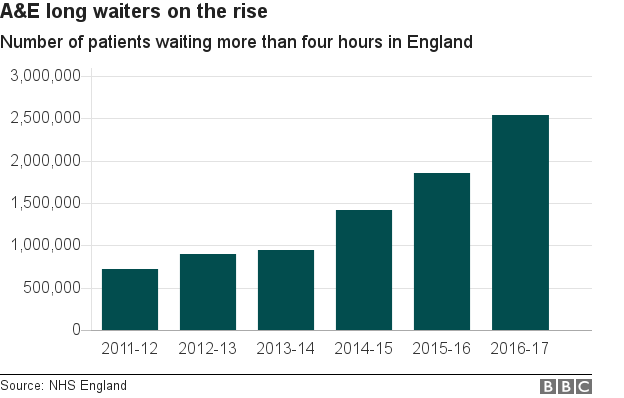
The Health Foundation chose the last five years because 2012 is when the most recent target - the 18-week wait for routine operations - came into force.
It found growing numbers of people were waiting longer than the official target times for each of the three measures:
More than 2.5m people waited more than four hours in A&E - up from 725,000 during 2011-12
Those waiting more than 62 days for cancer treatment topped 26,000 last year - nearly double the total from five years previously
More than 360,000 people have now waited more than 18 weeks for an operation, compared with 160,000 five years ago
Researcher Tim Gardner said: "Maintaining, let alone improving, the quality of care provided is going to be very difficult in the current financial climate.
"Funding for the NHS in England will need to increase if these hard won gains to the quality of patient care are to be upheld and built upon in the future.
"Waiting time targets for A&E, cancer and consultant-led treatment are a useful barometer of pressure on the NHS."
What are the NHS targets?
The four-hour A&E target was established in 2004 - although the way it was measured changed in 2010.
Currently 95% of patients are expected to be seen and treated or admitted in four hours, but that was achieved in only 89.1% of cases last year - the worst performance since the target was introduced.
The 2.5 million patients who waited more than four hours was seven times higher than the numbers who waited that long a decade ago.
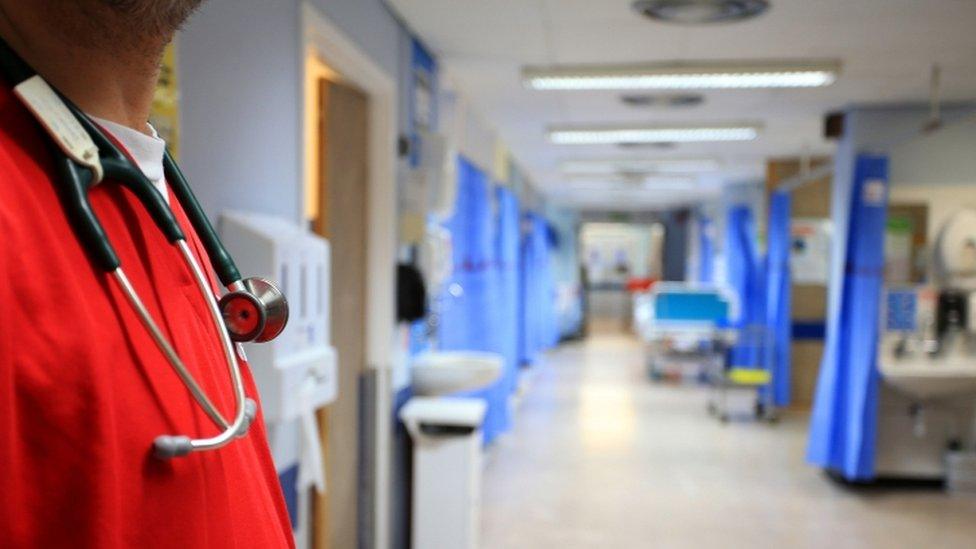
On hospital operations, which includes things such as knee and hip replacements, 92% of patients should get treatment within 18 weeks of going on the waiting list.
That was introduced in 2012 - another target was used previously for routine care - and has been met each year since, until 2016-17 when 90.7% were seen in that timeframe.
The cancer target dates back to 2009. It measures the length of time between an urgent referral from a GP to the point at which treatment starts. This is meant to take no longer than 62 days in 85% of cases.
But last year only 81.8% of patients were seen that quickly, according to the Health Foundation.
What about the rest of the UK?
England is not unique in that it is struggling to hit its targets. The way performance is measured is different in the rest of the UK.
For example, Wales only aims to carry out hospital operations in 26 weeks rather than 18.
But on each of the three measures, Scotland, Wales and Northern Ireland have been struggling to achieve what they have set themselves.
The full year figures are not yet available for any of them. But looking at monthly performance, it is clear that Northern Ireland has the worst.
On A&E performance some months have seen over a quarter of patients waiting longer than four.
Scotland - on a month-by-month basis - has tended to have the best performance.
- Published9 February 2017

- Published9 January 2017
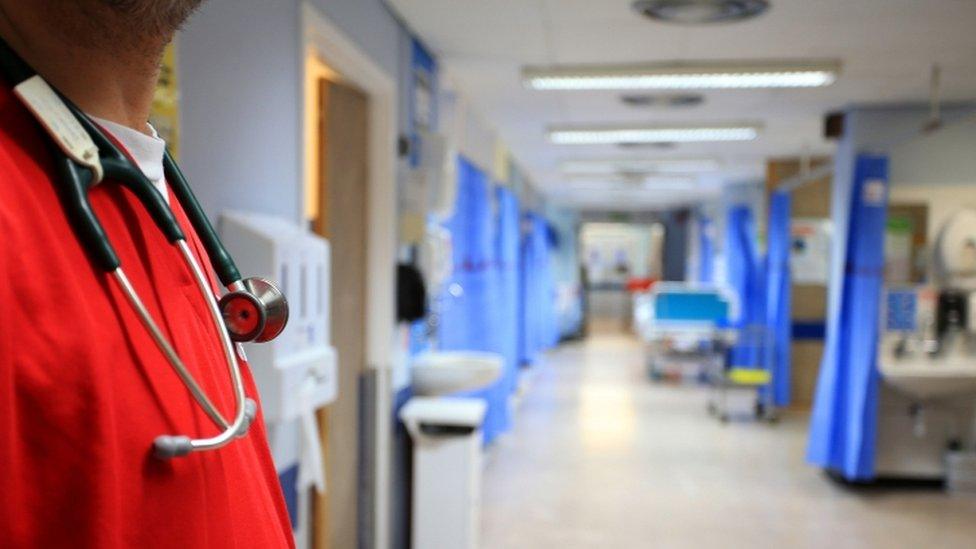
- Published7 January 2017
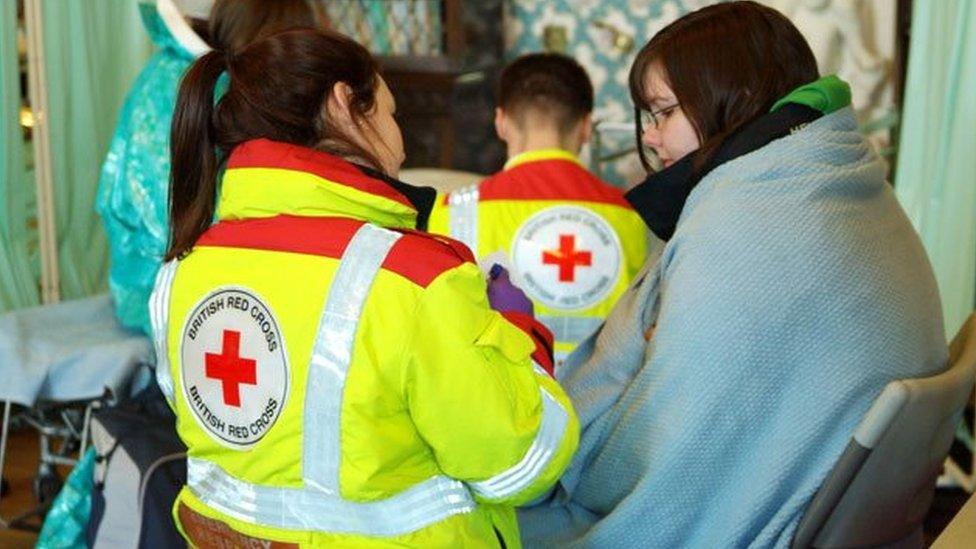
- Published9 June 2015
